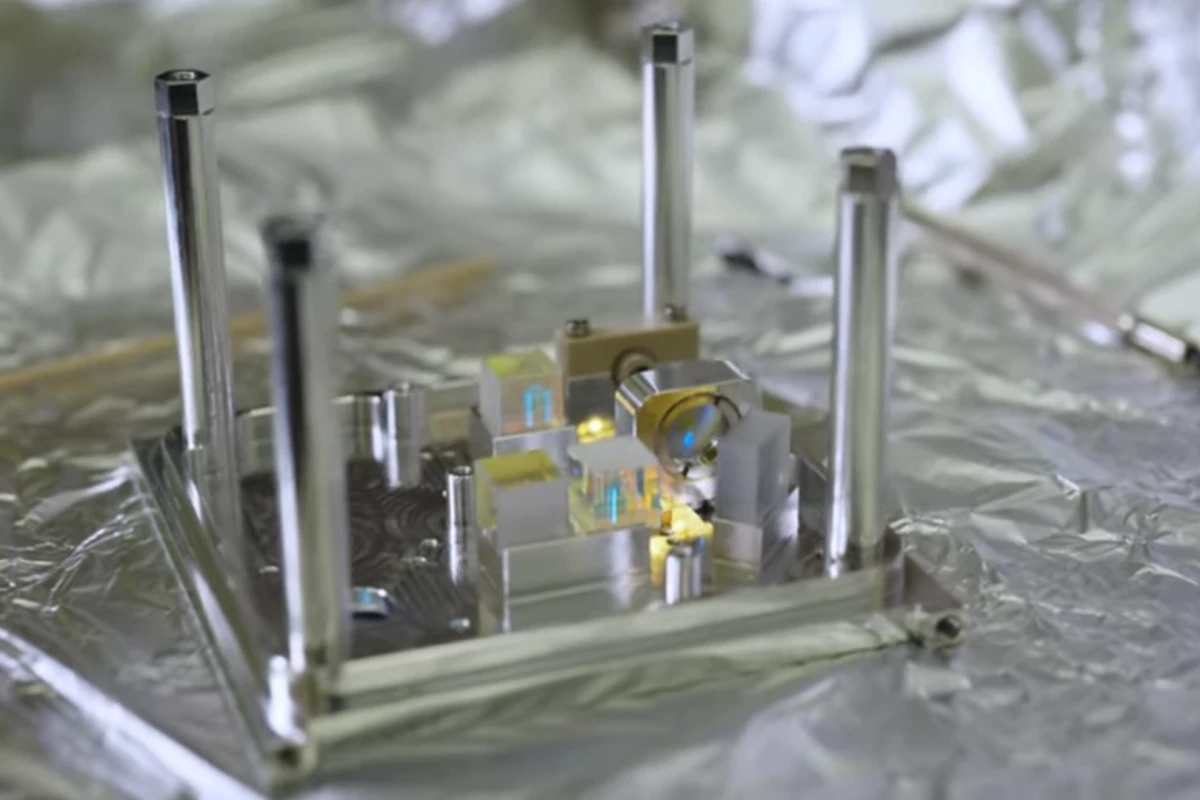Dark matter is thought to outnumber regular matter by a factor of five to one – so why can’t we find the stuff? A new study proposes looking for it from space, using a satellite containing a levitating piece of graphite and a laser.
Dark matter is the invisible substance that theory says is all around us. Basically, astronomical observations don’t make sense based on the amount of matter we can see, which led astrophysicists to develop models that included huge amounts of extra matter that we can’t see. This strange stuff only interacts with regular matter and light through its gravitational influence.
Scientists have been running experiments for decades to try to find dark matter, but so far no signal has been definitively detected. Physicists at the University of Southampton have developed a new device that could search for the mysterious matter in a unique way.
The experiment would be self-contained on a small satellite, a so-called CubeSat measuring just 10 x 10 x 7 cm (3.9 x 3.9 x 2.8 in) and weighing 1.5 kg (3.3 lb). Inside would be a small sheet of graphite weighing about 1 gram (0.04 oz), which is being levitated using a magnetic trap. A laser is beamed towards a photon detector on the opposite side, with the floating graphite blocking the light.
The idea is that as waves of dark matter wash over the satellite, its gravitational influence would wobble the levitating graphite. This would cause different amounts of light to bounce around to the detector, allowing the team to determine the presence and characteristics of the dark matter.
“So as the satellite orbits the Earth, and consequently through the dark matter halo predicted to be present in the galaxy, our traps – aimed in three different directions – would receive varying amounts of dark matter flux,” Tim Fuchs, physicist at the University of Southampton, tells New Atlas. “The orbits of the Sun and the Earth through the galaxy make it so that we are at a certain velocity with respect to the dark matter halo. You could see this as a ‘dark matter wind,’ pushing our graphite like a sail, with periodic variations along the orbit.”
There are many different forms that dark matter could take, with different characteristics including its mass, how it responds to forces like electromagnetism, and how strongly it interacts with regular matter or even other dark matter particles. Over the decades, different experiments have been conducted to hunt for specific types based on theorized properties.
One method of searching assumes that dark matter very rarely interacts with regular matter. Experiments like LUX and XENON1T are designed to find these candidates, known as weakly-interacting massive particles (WIMPs), inside a huge tank of liquid xenon. This is isolated against any outside interference by housing it in a cryogenic chamber that’s submersed in a tank of water that’s buried beneath a mountain. On the rare occasions when a WIMP bumps into a xenon atom, it would give off a flash of light that sensitive detectors around the tank could pick up.
These experiments, however, have yet to detect anything over the years. But maybe that’s because dark matter actually does interact with regular matter more often than we give it credit for. Finding this version of dark matter might be better suited to space-based experiments, where there’s physically less stuff for it to bump into.
“If there is sufficient density of dark matter particles that have a sufficiently high [interaction rate], they would be shielded from Earth based detection by either the atmosphere or any other type of overhead burden – i.e. mountains to shield experiments from other signals, such as in the liquid xenon experiments in the Italian Alps,” Fuchs tells us.
Of course, there’s every chance that this satellite experiment won’t detect dark matter either, but having more teams looking in more places will boost our odds of one day finding this elusive substance.
The satellite is expected to be launched into orbit early next year, where it will conduct its experiments for two years.
The team describes the project in the video below.
Source: Southampton University




